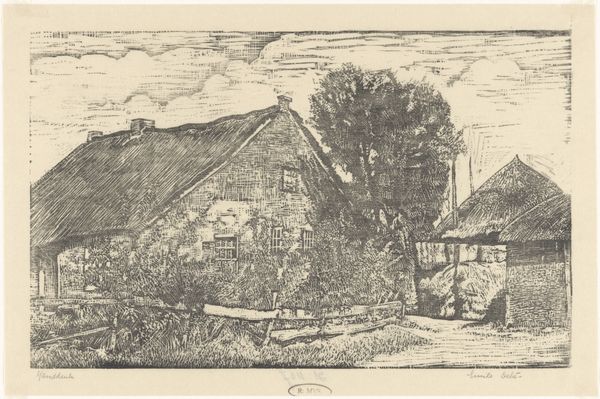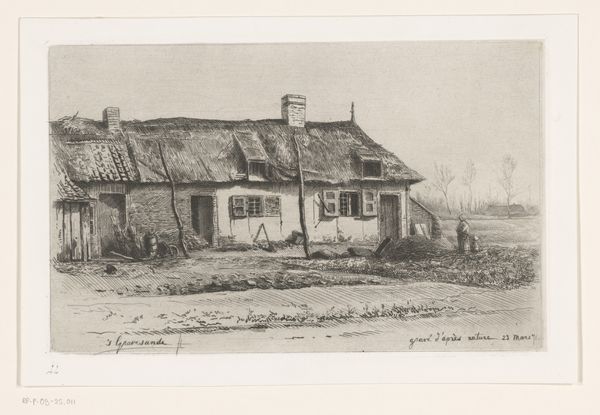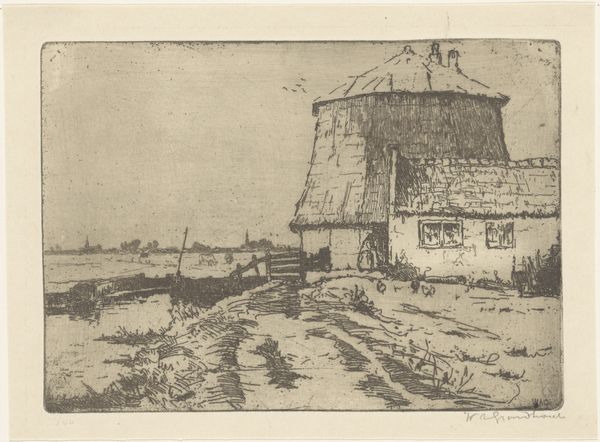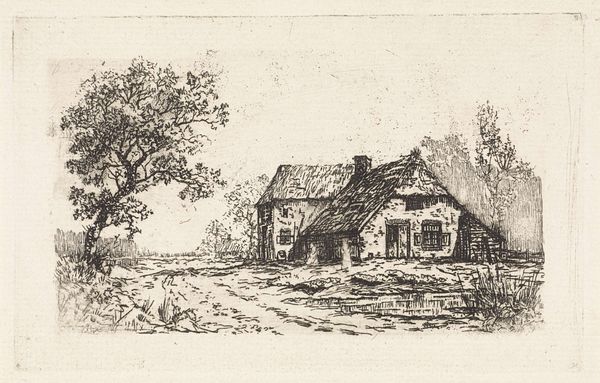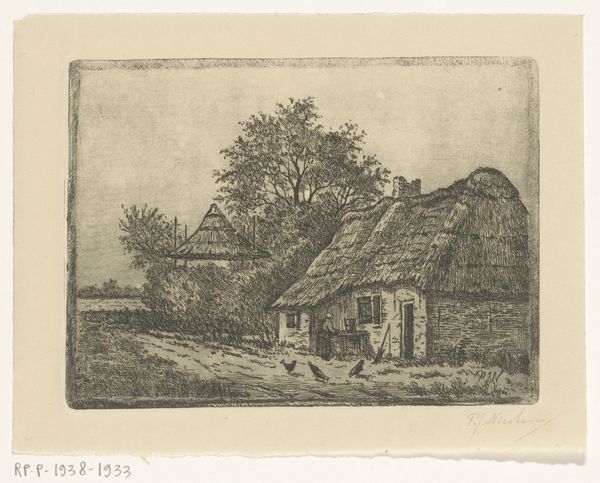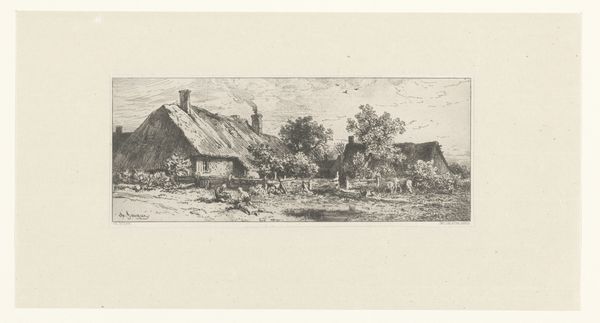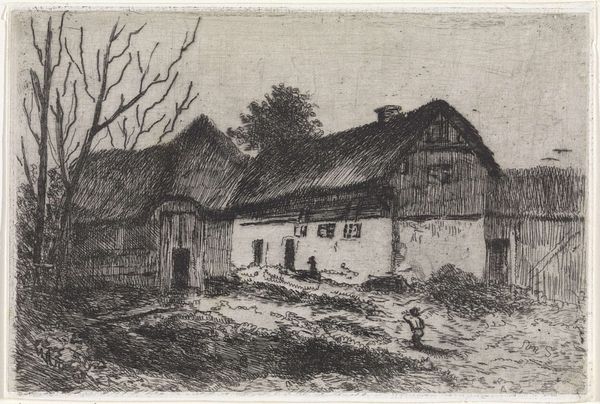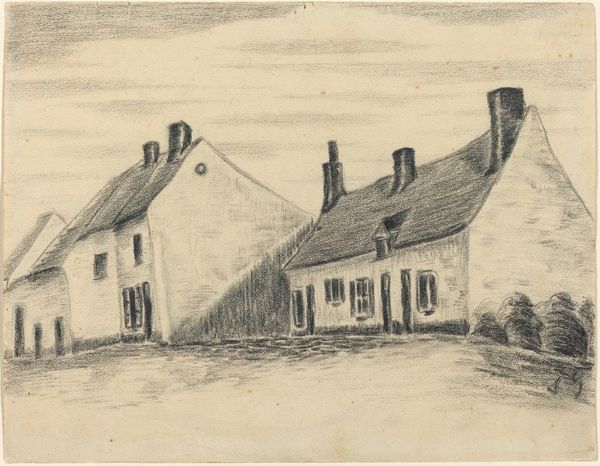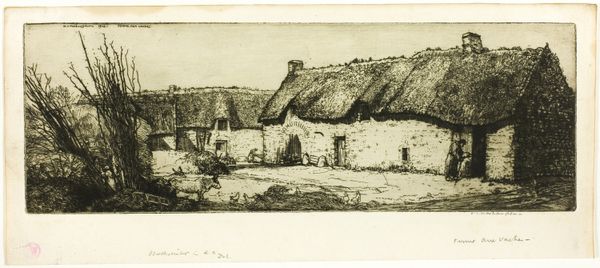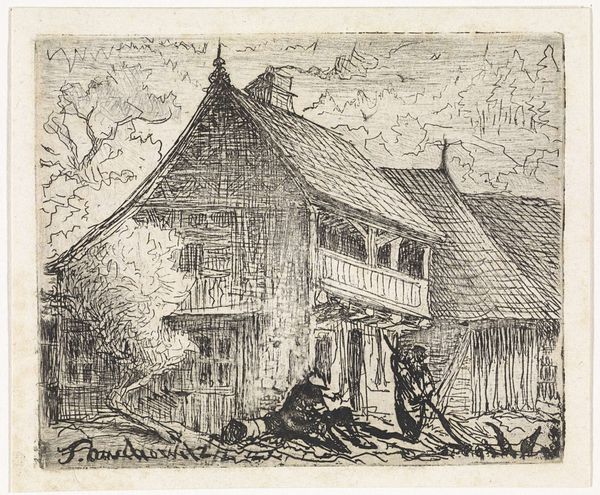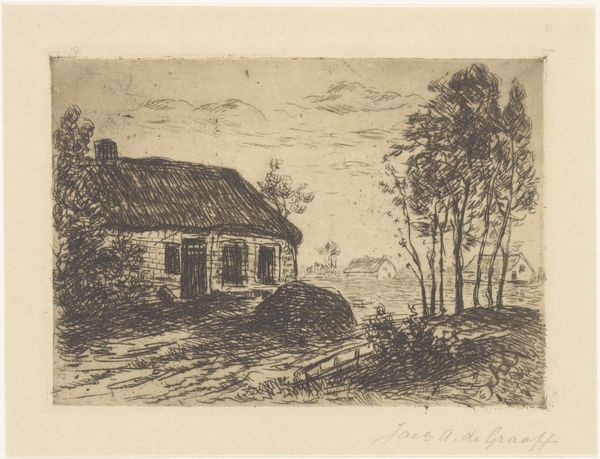
drawing, pencil
#
drawing
#
dutch-golden-age
#
landscape
#
etching
#
pencil
#
cityscape
#
realism
Dimensions: height 352 mm, width 407 mm
Copyright: Rijks Museum: Open Domain
Editor: This is "Huisjes te Nes," a pencil and etching piece by Otto Hanrath, created in 1925. It’s a charming cityscape. I'm immediately struck by the rough texture. How should we interpret this work? Curator: Considering this etching through a materialist lens, let’s look closely at the choices Hanrath made in production. Why etching and pencil in 1925? What connotations did these materials carry? Were they cheap and accessible, allowing for wider circulation? Or, conversely, were they seen as traditional, lending an air of established artistic value to his depiction of these houses? Editor: I hadn't thought about it that way. Were etchings common for cityscape depictions then? Curator: Exactly! This leads us to think about the social context. Was Hanrath intentionally linking himself to the Dutch Golden Age tradition using a historical material? Perhaps etching was a means of connecting with the past in a rapidly changing society, imbuing this common scene with nostalgia, and commenting on the state of labour and the simple pleasures in 1925. The medium allows for mass production of the imagery which, arguably, allows a wider section of the public to buy and enjoy art works in a rapidly commercial world. The houses depicted become less ‘art’ and more ‘commodity.’ What do you make of the actual depiction of the houses themselves, in light of this? Editor: I see what you mean! So it’s not just about what is shown, but the 'how' is very relevant to the artistic statement and reach of it at that time. Curator: Precisely. By examining the labour, materials, and context, we gain a richer understanding. Editor: This gives me a lot to consider when viewing artworks! Thank you.
Comments
No comments
Be the first to comment and join the conversation on the ultimate creative platform.
